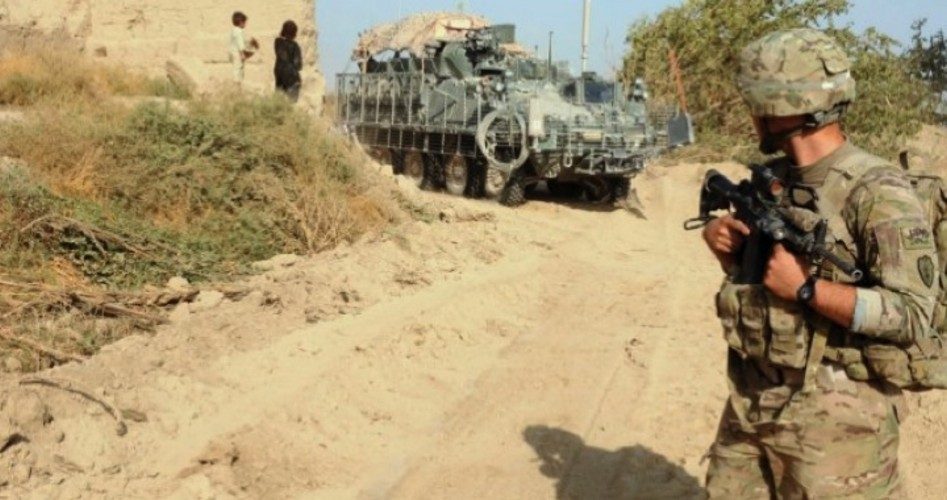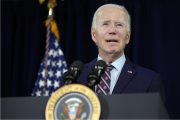
Secretary of Defense Chuck Hagel will release a Pentagon budget Monday calling for reduction in the number of U.S. Army personnel to its lowest level since before World War II and the elimination an entire class of Air Force fighter planes, according to reports in the New York Times and the Wall Street Journal. The plan would reduce the number of troops to between 440,000 and 450,000, well below the post-9/11 peak of 570,000.
The reductions, which require congressional approval, will likely stir strong opposition on Capitol Hill and from veterans groups, which will likely hear a political call to arms in the cost-reduction plans the Journal reported on Friday. The plans include a limit on military pay raises, higher fees for healthcare benefits, reduced housing allowances, and a one-year freeze on raises for top military brass.
“Personnel costs reflect some 50% of the Pentagon budget and cannot be exempted in the context of the significant cuts the department is facing,” Defense Department spokesman Adm. John Kirby told the Journal. “Secretary Hagel has been clear that, while we do not want to, we ultimately must slow the growth of military pay and compensation.”
While the turn to a smaller Army reflects the nation’s commitment to deficit reduction and the possibility of further reductions under the sequestration provision of a budget agreement between the president and Congress, military officials say some of the savings achieved can be used to better equip and train U.S. soldiers. “We’re still going to have a very significant-sized Army,” said one Defense Department official quoted in the Times article published late Sunday. “But it’s going to be agile. It will be capable. It will be modern. It will be trained.”
Pentagon officials, speaking to the Times on condition of anonymity, said the reductions would still leave the United States with the world’s greatest military capability, able to defeat any enemy, but too small for years-long foreign occupations. The smaller army could invite adventurism by adversaries, they said. But it could also reduce the temptation to adventurism by the United States, since the officials acknowledged it would increase the risks involved in fighting two large-scale wars at the same time. It would take longer to achieve the military objectives and would result in a larger number of casualties, they said.
The plan reflects a shift in U.S. defense strategy, following the end of a bloody eight-and-a-half year U.S. occupation in Iraq in 2011 and the phased withdrawal of U.S. troops from the war in Afghanistan, now in its 13th year. Both wars followed the September 11, 2001 al-Qaeda attacks on the United States. Afghanistan had harbored al-Qaeda training camps, and while Iraq had no apparent role in the 9/11 attacks, the U.S. invasion of that country in March 2003 was also said to be a part of the “war on terror” declared by President George W. Bush, who ordered the action with the support of Congress.
Hagel’s priorities reflect an effort to avoid future military actions that require American “boots on the ground” in foreign lands, while maintaining a strong commitment to Special Operations forces and cyberwarfare. It has the endorsement of the Joint Chiefs of Staff, but also contains the seeds of increased inter-service rivalry, as not all branches would be subject to equal cutbacks. The plan calls for eliminating the entire fleet of the Air Force A-10 attack aircraft, for example, while keeping all 11 Navy aircraft carriers. Spain and Italy, with two each are the only other countries with more than one aircraft carrier, according to globalfirepower.com.
The plan calls for retiring the U-2 spy plane, the cold war weapon that became famous after the Soviet Union shot down the U-2 flown by Gary Powers over Russian air space in 1960, triggering a crisis in U.S.-Soviet relations. Hagel’s budget plan will preserve funding, however, for the F-35 warplane, a project that has undergone delays and has been subject to criticism over design flaws.
“This is a real uphill battle with Congress,” Mieke Eoyang, director of the National Security Program at a Washington think tank called Third Way, told the Journal. “God bless [Hagel] for trying to get a handle on these costs,” she said. “But in this political environment, in an election year, it’s going to be hard for members of Congress to accept anything that’s viewed as taking benefits away from troops.”
The fiscal restraints might, however, concentrate some minds in Congress on the commitment made in the early days of the Republic to avoid needless “foreign entanglements” warned of by Presidents Washington, Jefferson, John Quincy Adams, and others. Those admonitions appear to have been forgotten during the cold war and during the George W. Bush administration’s campaign to, in Bush’s words, “rid the world of evil-doers” and bring about a “global democratic revolution.”
editor’s note: The article was changed to list peak troop numbers at 570,000, instead of 560,000.


